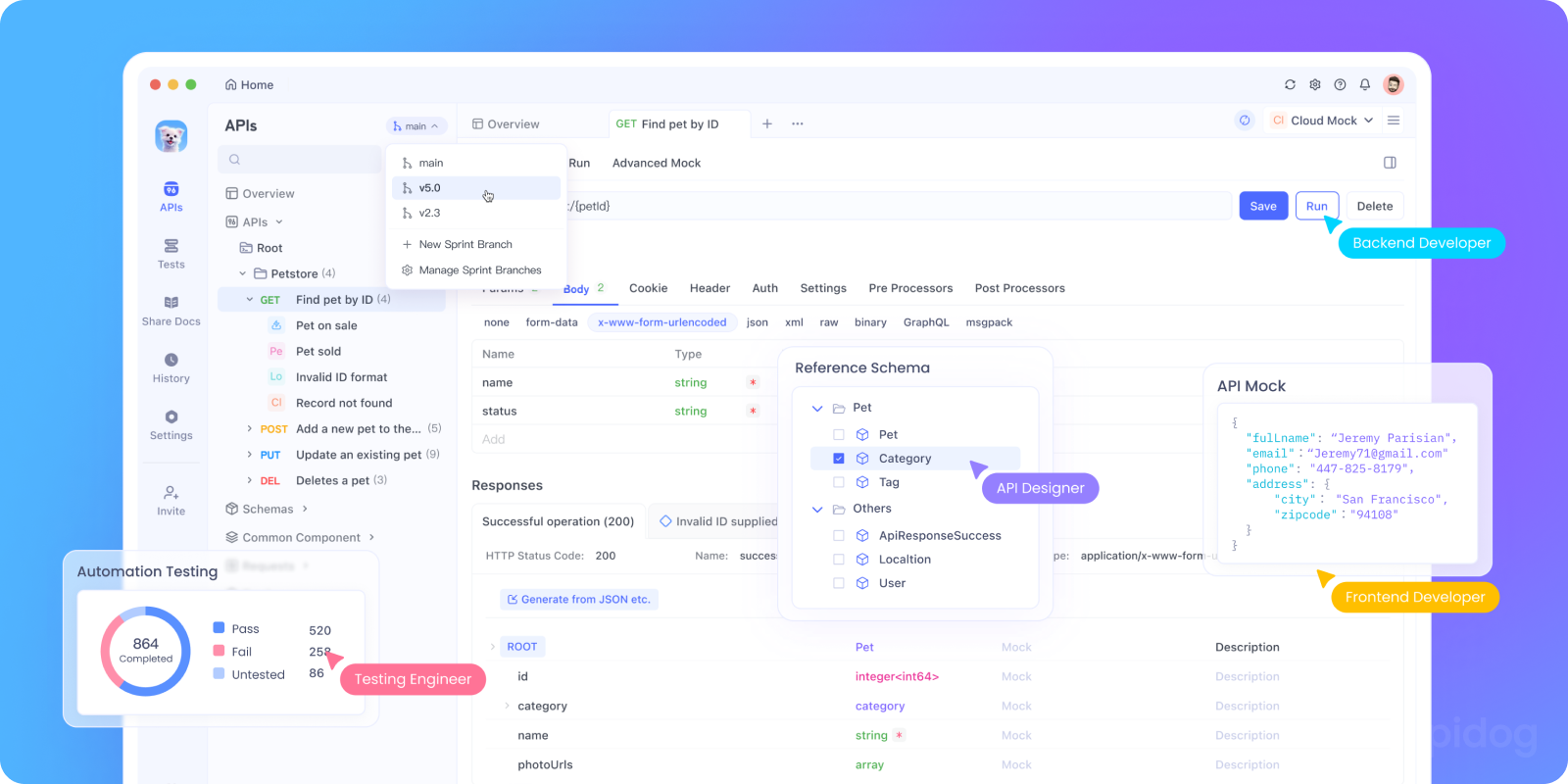You're working on your website, trying to set up what seems like a simple redirect. You test it, and instead of the page loading, your browser spins for what feels like an eternity before finally giving up with a cryptic error: 508 Loop Detected. You've accidentally created a digital ouroboros a snake eating its own tail and the server has wisely stepped in to prevent your mistake from bringing everything to a grinding halt.
The 508 status code is the web server's circuit breaker. It's a protective mechanism that says, "I've detected an infinite loop in your configuration, and I'm shutting this down before it consumes all our resources and crashes the system."
If you've ever worked with complex server configurations, proxies, or WebDAV, understanding this code can save you from some serious headaches. It's not as common as 404 or 500 errors, but when it appears, it usually indicates a significant configuration problem that needs immediate attention.
And before we dive into the technical details, let me share a little secret.
Alright, let’s break down exactly what’s happening with that mysterious 508 error.
Setting the Stage: The World of WebDAV
To understand 508, we need to briefly visit its home: WebDAV (Web Distributed Authoring and Versioning). WebDAV is an extension of HTTP that allows users to collaboratively edit and manage files on remote web servers. Think of it as allowing your computer to treat a website like a network drive where you can create, delete, and move files.
In complex WebDAV operations like copying folders that contain symbolic links or dealing with complex permission structures it's possible to create infinite loops where the server keeps referring back to itself indefinitely. The 508 status code was created specifically to handle these scenarios in WebDAV environments.
What Does HTTP 508 Loop Detected Actually Mean?
The 508 Loop Detected status code indicates that the server terminated an operation because it encountered an infinite loop while processing a request. This is a server protection mechanism, not a client error.
The official definition from RFC 5842 states that this code means:
The server terminated an operation because it encountered an infinite loop while processing a request with "Depth: infinity". This status indicates that the entire operation failed.
The key phrase here is "Depth: infinity" a WebDAV-specific header used for operations that should recursively process through an entire directory tree.
A typical 508 response might look like this:
HTTP/1.1 508 Loop DetectedContent-Type: application/xml; charset="utf-8"
<?xml version="1.0" encoding="utf-8"?>
<error xmlns="DAV:">
<loop-detected/>
<description>Infinite loop detected while processing PROPFIND request</description>
</error>
In simpler terms:
- The server started executing a process.
- That process depended on another action that pointed back to the first one.
- The server realized it’s going in circles and stopped, returning 508 to prevent crashing or consuming endless resources.
So, if your app is doing deep file synchronization, recursive directory copying, or multi-layered dependency fetching this is the kind of error that might pop up.
How Infinite Loops Happen: Common Scenarios
While 508 was designed for WebDAV, the concept of infinite loops can occur in various server configurations. Let's explore some common scenarios.
1. WebDAV PROPFIND with Symbolic Links
This is the classic scenario that 508 was designed to prevent. Imagine this structure:
/folder-a
↳ file1.txt
↳ symbolic-link -> /folder-b
/folder-b
↳ file2.txt
↳ symbolic-link -> /folder-a
If a client sends a PROPFIND request with Depth: infinity on either folder, the server would endlessly bounce between folder-a and folder-b via the symbolic links. The server detects this and returns a 508 to break the cycle.
2. Redirect Loops in Web Server Configuration
This is probably the most common scenario where people encounter loop-like behavior (though it typically results in browser errors rather than a true 508). Imagine this Apache configuration:
# This creates an infinite redirect loop
Redirect 301 /page-a /page-b
Redirect 301 /page-b /page-a
A request to /page-a redirects to /page-b, which redirects back to /page-a, creating an infinite loop. Most modern browsers will detect this and show an error like "This page isn't redirecting properly."
3. Reverse Proxy Misconfiguration
In complex server architectures with multiple proxies, you can create loops where requests bounce between proxies indefinitely. For example:
Client → Proxy A → Proxy B → Proxy A → ...
4. Application Logic Errors
In custom applications, poor programming can create infinite loops:
<?php
// A badly designed URL routing system
if ($_GET['page'] == 'home') {
header('Location: /?page=about');
} elseif ($_GET['page'] == 'about') {
header('Location: /?page=home');
}
?>
Why 508 Loop Detected Matters for Developers
You might be thinking: “Okay, so it’s just another error code. Why should I care?”
Here’s why: A 508 error signals logical issues, not just bugs. It often reveals deeper design flaws cyclic dependencies, improper request handling, or architectural issues.
If left unresolved, these loops can:
- Crash servers under recursive load
- Cause memory leaks
- Slow down performance
- Create inconsistent data states
In short, a 508 is more than a nuisance. It’s your system’s way of screaming, “I’m chasing my own tail!”
508 vs. Other Error Codes: Knowing the Difference
It's important to distinguish 508 from other server errors you might encounter.
508 Loop Detected vs. 500 Internal Server Error:
508is a specific, intentional response to a detected infinite loop. The server knows exactly what went wrong.500is a generic catch-all for when something went wrong but the server can't be more specific.
508 Loop Detected vs. 302 Found (Redirect Loop):
508is a WebDAV-specific code that terminates the operation on the server side.- A redirect loop involves multiple
3xxresponses that the client (browser) eventually gives up on.
508 Loop Detected vs. 508 Loop Detected:
Interestingly, while 508 was designed for WebDAV, some modern servers and proxies have started using it for non-WebDAV infinite loop scenarios as well, recognizing it as the most semantically appropriate code for this situation.
The Server's Perspective: Why 508 is a Safety Feature
From the server's point of view, detecting and terminating infinite loops is crucial for several reasons:
- Resource Protection: Infinite loops can consume CPU, memory, and network resources, potentially making the server unresponsive for other users.
- Preventing Denial of Service: A single misconfigured client could accidentally (or intentionally) create loops that degrade server performance for everyone.
- System Stability: Unchecked infinite loops can lead to server crashes or require manual intervention to resolve.
- User Experience: It's better to return a clear error immediately than to let a request hang until it times out.
Testing and Debugging APIs with Apidog

While you can't easily test a true WebDAV 508 without a WebDAV server, you can test for similar circular dependency issues in your APIs and configurations. Apidog is excellent for this kind of proactive testing.
With Apidog, you can:
- Test Redirect Chains: Create requests that should follow redirects and verify they complete successfully without excessive hops.
- Set Maximum Redirect Limits: Configure Apidog to fail if a request requires more than a certain number of redirects, helping you catch potential loops early.
- Test API Dependencies: If you have APIs that call other APIs, use Apidog to create integration tests that ensure these dependency chains don't create circular references.
- Monitor Performance: Use Apidog to track response times. A sudden spike or hanging request might indicate a loop-like condition developing.
- Document Expected Behavior: Use Apidog to document what should happen in complex multi-step API interactions, making it easier to spot when something has gone circular.
That’s how professional teams use Apidog not just as a testing tool, but as a loop detector before loops ever reach production.
Troubleshooting 508 Errors
If you encounter a 508 Loop Detected error, here's how to approach troubleshooting:
1. Check WebDAV Configuration
If you're using WebDAV:
- Look for circular symbolic links or hard links
- Check folder permissions and inheritance
- Review any custom WebDAV handlers or extensions
2. Examine Server Logs
Server logs usually provide more context than the client sees:
- Look for the specific request that triggered the loop
- Check for patterns in the URLs or parameters
- Look for any custom modules or extensions that might be causing the issue
3. Review Redirect Rules
Check your web server configuration (.htaccess for Apache, server blocks for Nginx) for:
- Redirect chains that might loop back on themselves
- Rewrite rules with incorrect conditions
- Proxy configurations that might create circular routing
4. Test Incrementally
If you've made recent changes:
- Roll back changes one by one to identify what introduced the loop
- Test each configuration change independently
- Use staging environments to test complex configurations before deploying to production
Prevention: Best Practices
The best way to deal with 508 errors is to prevent them from happening:
- Be Careful with Recursive Operations: When working with recursive file operations or API calls, always implement depth limits or cycle detection.
- Validate Configurations: Use configuration validation tools for your web server to catch potential loops before they go live.
- Monitor for Patterns: Set up monitoring to alert you if certain endpoints start taking unusually long to respond, which might indicate loop conditions.
- Document Complex Dependencies: Keep clear documentation of how different systems and endpoints interact to avoid creating circular dependencies.
SEO Optimized Summary (for Developers Googling at 2 AM)
If you found this blog because your API threw a 508 error at 2 in the morning, here’s your quick takeaway:
- What it means: Your server found an infinite loop while processing a recursive request.
- Where it happens: WebDAV, APIs, proxy misconfigurations, CMS loops, recursive database lookups.
- How to fix: Break cyclic dependencies, adjust routing, review recursive logic, and test using tools like Apidog.
- Prevention: Monitor logs, implement recursion limits, and validate request flow regularly.
Conclusion: The Circuit Breaker for Server Safety
Unlike a 500 or 503, 508 Loop Detected isn’t a catastrophic failure it’s a protective mechanism. The server is doing the smart thing by stopping before it spirals out of control.
The HTTP 508 Loop Detected status code serves an important protective function in the web ecosystem. While most developers will rarely encounter it unless they work extensively with WebDAV, understanding what it represents is valuable for anyone working with complex server configurations.
It's a reminder that good system design includes safeguards against failure modes in this case, the infinite loops that can bring servers to their knees. The 508 is the server's way of saying, "I'm stopping this before it hurts anyone."
By understanding how loops can occur and implementing proper testing and monitoring, you can avoid these issues in your own systems. And when you're building and testing complex API interactions, a tool like Apidog can help you identify potential circular dependencies before they become production problems, ensuring your systems remain stable and responsive.



